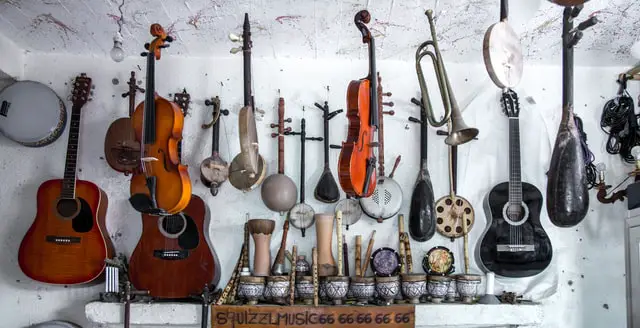Preface
Why are nendoroids so expensive? Nendoroids are a subset of action figures which are the cutest, most sought-after toys in Japan. The price point for some of these figures can cause sticker shock, though they’re not just necessarily expensive. Usually, there is a reason that these toys cost as much as they do and this post will explore what those reasons might be.
Some people want to purchase Nendoroid for the purest form of expression of an idea. Others want to show their support by purchasing these items on top of the regular monthly fan club fee.
For some people, nendoroids are a way to express their love for anime. Some will buy multiple sets of nendoroids based on favorite shows.
Some people want to purchase these figures because they’ve been collecting toys since they were little and they love the idea of having a collection but don’t have enough disposable income to buy everything yet. In these cases, nendoroids are a way to make it past that first threshold in collecting so that the rest of the collection can be achieved one day.
These cost points can be off-putting for some people who simply want a cheap toy. I’m personally in the group of people that think that any toys or collectible figures are worth the price if you will enjoy them. People may not enjoy nendoroids but they should never feel guilty for not getting one.
Nendoroid and Figure Culture in Japan
Figure culture is a huge factor in why Nendoroids cost so much there. There is a high demand for these figures not just from fans, but from other professional companies to produce more and more Nendoroid-like figures. For companies to keep up with fan demand, they have to continually create new products that are artistic, fun, and have details. That costs money.
Nendoroids have been around for a long time so demand has been high for these toys. This means that Nendoroid production companies have to keep upping their game to meet the expectations of fans. To increase profit, these companies have created new products from previously un-recycled material which leads to re-using and recycling of materials. That is the story of why Nendoroid is expensive.
Used Nendoroids
Used Nendoroids are some people’s worst nightmare when it comes to buying a figure. Many online stores and hobby shops will let you buy used figures from people that are selling them on their own. For fans of Nendoroid who plan to purchase a lot in the future, this may be a viable option for getting a very affordable figure that is still high-quality. Some people are even willing to pay pennies for these figures because they believe the price is worth it when compared to buying an overpriced new one.
However, there are still some risks with buying used figures. Some sellers have only been selling on eBay or HobbyLink Japan so they may not be very knowledgeable about the condition of their items or how old they are. There is also a risk in purchasing from a third party because there is no way for you to contact the seller to ask if the item is in good condition before buying.
If you’re thinking about buying used nendoroids, I would recommend reading up on how to spot and avoid certain signs of damage when looking at your figure.
Used Product in an Excess of Demand
Another reason why nendoroids are expensive is that people are scared that the market for these figures will decrease if they produce too many. Nendoroid figures have been around for a long time so their serial numbers go back to when they were first produced. To put this into perspective, the Figma line has around 1% of the popularity as Nendoroid and it’s been around since 2008! That’s not to say that they’re not worth purchasing but it shows that people think that demand will become limited in the future.
Most companies will keep producing new figures while continuing to make old figures. However, the older figures are often in much lower quantity and some of them never get a re-run (which can also be a reason why people think that nendoroids are expensive).
The amount of demand for these figures is hard to gauge and is changing quite often due to new products being constantly released. New figures and companies are entering the market all the time so the supply is always being affected by the demand.
What you should do: If you’re unsure about whether or not you want to buy a figure, I’d suggest buying it off of an official distributor such as HobbyLink Japan or Try The Best instead of eBay. This way you can ask them if they will restock the item if it is out of stock. Also, placing a single order instead of making several small orders allows whomever you’re buying from to place a bulk order with the supplier which will hopefully bring down their cost.
Frequently Asked Questions:
What is a Nendoroid?
A Nendoroid is an adorable action figure that resembles popular anime, manga, and game characters. Although they represent small people (or creatures) in the form of animals or magical beings, the sturdy construction of each Nendoroid makes them great for display as if they were puppets on strings. Japanese otaku has long looked forward to new releases from their favorite series with anticipation comparable to American kids waiting for Christmas morning. This is primarily because Nendoroids are based on characters who appear in an endless stream of anime, manga, and games. They all look like their characters, and they’re all super cute and collectible.
Who makes Nendoroids?
Two companies make Nendoroids: the Good Smile Company (GSC) and Max Factory. GSC has a subsidiary called Orange Rouge; this subsidiary makes character figures with colorful costumes, accessories, and hair colors.
What is the manufacturing company’s background?
Both GSC and Max Factory have a very long history. The Good Smile Company was founded in 2003, and its parent company, the Goodsmile Holding Company, opened for business in 1998. Both entities are globally renowned for producing the highest quality models that are still easy to keep up with as hobbies. This dedication has led to contracts with toy and video game companies around the world, including Nintendo and Sony Playstation. (GSC also has an affiliate with Nintendo.)
How are Nendoroids made?
Although the process of Nendoroid production varies from one company to another, the basic procedure remains the same. First, a team will be commissioned to design a character figure. This is primarily so that all Nendoroids adhere to unified character concepts and features, as well as to ensure skillful painting and sculpting.u003cbru003eu003cbru003eNext, a two-dimensional doll similar in form to the final product will be created by hand. A 3D version of this doll is then created to make sure that the proportions of the figure are correct. The painting and sculpting process is also done using this doll as a model; one figure can take more than a year to complete, which is why both companies release only 10-20 figures each year.
How much do Nendoroids cost?
The price varies depending on the complexity and popularity of the character, but they generally cost between US$50 and US$150.
Where can I buy my Nendoroid?
You can purchase your Nendoroid from stores such as Amazon Japan and AmiAmi. If you want to buy one for yourself, you can check out the different stores that are localized in your country.u003cbru003eu003cbru003eWhenever GSC and Max Factory release a new set of figures, they will also sell the first batch through their websites.
When were nendoroids made?
There are different theories on when and how this cute collectible was brought into existence.u003cbru003eu003cbru003eIn March 2001 the Good Smile Company released Nendoroid #01, a prototype for a game based on the Magical Girl Lyrical Nanoha series.u003cbru003eu003cbru003eThe prototype was called Nendoroid More and it had three different accessories. The prototype was of Nanoha Takamachi, a character from Lyrical Nanoha. It included accessories for her one-inch gun and a flight unit (a technology that lets an object fly). In the photos, there is also a light stand that is used to pose her in different positions. Although Nendoroid More started as a prototype, it was released officially with the limited edition of the first Lyrical Nanoha soundtrack.u003cbru003eu003cbru003eThe prototype for Nendoroid More was also used to create a model of Fate Testarossa from Lyrical Nanoha. Her prototype had accessories of her whip and magic. The second prototype was also used in creating the actual Fate Testarossa nendoroids which were released in December 2003.u003cbru003eu003cbru003eIn 2003 the Good Smile Company released another prototype called Nendoroid More #02 which was of the character Haruhi Suzumiya from the anime series u0022The Melancholy of Haruhi Suzumiyau0022. Like Nanoha Takamachi, this second prototype had accessories of her gun and flight unit. Her hair is sculpted with a slight gradient in color as well as a face just like the actual Nendoroid.
Why are there so many vendors?
Because Nendo is a very popular form of toy. It’s not uncommon for a Nendo figurine to sell for $350-$400 depending on the rarity and popularity of the character.
Why are they called u0022nendosu0022?
Nendo comes from the Japanese word ‘nen’ which means ‘girl’. The primary purpose of Nendo is to appeal to young girls and spread the culture of Japan.
What are nendoroids made of?
Nendoroids, beloved figurines that are a popular collectible in Japan, have re-captured the hearts of many around the world with their cuteness and diminutive size. However, these little toys are made from a surprisingly complex mix of materials to create what looks like something out of a dream. So what exactly is inside nendoroids?u003cbru003eu003cbru003eThe answer is pretty simple – they’re mostly made with ABS plastic, which can be found at most hardware stores as well as being used as generic packaging material. That may not sound like a very exciting material to be made of the most desirable figurines, but the material is perfect for nendoroids with its lightweight yet durable qualities. This helps to keep costs down and also allows for their small size, as well as their lightweight allowing for easier transportation.u003cbru003eu003cbru003eThe second most common material you’ll find in nendoroids is PVC, which is used to create the unique parts of each figure such as faceplates and hairpieces. It’s entirely possible to be able to see the material like this in real life, as PVC can be transparent or white.u003cbru003eu003cbru003eThe biggest advantage of using PVC is its malleability, which allows it to create hard-to-make shapes much easier. This malleability also makes PVC a cheaper alternative as well as recycling and reusing are very easy to handle.u003cbru003eu003cbru003eThe last parts of nendoroids are the least expected, with the paint and resin used on them being incredibly advanced and high quality. Due to the nature of the material, it’s not possible to use any kind of paint on it, and thus needs to be created from scratch. The resin is also capable of creating a lighter cast, as well as being able to withstand any heat used in nendoroids.u003cbru003eu003cbru003eFinally, there are paints developed from scratch to make sure their image is perfect and colorful. And after all of that comes the painting, but it should be said that they aren’t painted by hand. They aren’t even painted by a single person, with the mass production process being incredibly automated. This helps to cut down on costs and makes sure each Nendoroid is perfect in every way.u003cbru003eu003cbru003eSo the next time you see those tiny figures, remember how complex their production has been!
How many nendoroids are there?
To recap, there are 9,996 Nendoroids available for sale in the market today! That’s a lot of Nendoroids.u003cbru003eThere are so many new Nendoroid figures coming out every year that it is impossible to predict how many will be in the market by this time next year.u003cbru003eu003cbru003eThe most we can say is that u0022There are many Nendoroids!u0022u003cbru003eu003cbru003eThis also means that you won’t see all of them in your country. If you hope to collect every Nendoroid ever released, no matter where they are sold, then you must be prepared to buy from many different places, and through many different websites. Not to mention the shipping costs, which will stack up.u003cbru003eu003cbru003eThis is why the English website of Good Smile Company has a big notice at the top, saying u0022Please note. All Nendoroids available for sale from the GoodSmile Online Shop are only available for purchase in regions that officially sell and ship them. For more information about areas you can currently order form, please click here.u0022
How big are nendoroids?
Nendoroids are of a similar height to Shokugan’s Beyblade and Beyblade Burst figures. The height of the average Nendoroid figure is 10cm or 3.9inches tall.u003cbru003eu003cbru003eIf you want to know more about any particular Nendoroid figure, you can find their specs on the official Good Smile Company website.
How tall are nendoroids?
If you were to collect every single Nendoroid in the world, it would be taller than Mount Everest. For some of them, like Nendoroid Hatsune Miku, that’s about 5 meters or 16 feet tall! The average height for a Nendoroid is 25 centimeters or 9.8 inches tall.
What was the first Nendoroid?
Nendoroid Neco Arc.
Do nendoroids restock?
Restock is a term for when a store has more in stock of an item after it sells out, so Nendoroid can restock. It’s possible your local store may not have nendoroids, but other stores nearby might. You should be able to find the latest release in pre-orders if you search online.u003cbru003eu003cbru003eIf there are no pre-orders available or if the item isn’t listed on a website at all, then unfortunately the Nendoroid will not be getting restocked. If a Nendoroid is out of stock at a store, we won’t be carrying it on our website unless we have pre-orders available.
What is the rarest Nendoroid?
Nendoroid Osomatsu is a special rerelease of the standard Nendoroid Osomatsu figure. It was created to commemorate the show’s broadcast on TV Asahi, which will be broadcasting episode 339 for the first time. It was released on April 19, 2016. The figure will be 1/7 scale and comes with three different expressions: a smiling face, a crying face, and a confused look. It is currently available at the Akihabara UDX shop in Japan as well as other select stores throughout the country.u003cbru003eu003cbru003eUnlike most Nendoroid figures which are produced in batches of 20 to 100, Nendoroid Osomatsu is being produced in batches of 20 only, making it one of the rarest Nendoroids in existence.u003cbru003eu003cbru003eNotably, Nendoroid Osomatsu is the first Nendoroid to be produced in batches of only 20. This can be viewed as a big step forward as it might allow more figures to be made in the future, increasing the number of figures released.













